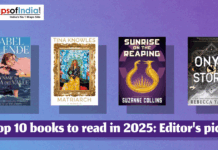Looking to write a terrific Republic Day speech this 26th January?
Every nation has its own way of celebrating its freedom and independence. India too has its own way of celebrating both. Being a diverse country it took 3 years for India to make its own constitution. Finally, it was in 1950 that India got its own constitution. Since then, Republic Day is celebrated on 26 January every year.
Being a national holiday of India, it is celebrated with full enthusiasm in government offices, schools and other academic institutions. Motivational speeches and cultural programs are an integral part of this celebration. Therefore, one must be very careful while writing and delivering a speech on this topic.
To make this task easier for you, here is a single point resource of relevant information and facts that will help you put together a speech that will stand out and be remembered by those who hear you. No matter, if you are teacher, student or any academecian, this information will definitely help you.
But before beginning to write your speech, you need to understand the importance and relevance of Republic Day for this nation.
Republic Day – January 26, 1950
– It was on this day that the Constitution of India came into force. Prior to this, India was governed by the Government of India Act, 1935. The Constitution was adopted by the Indian Constituent Assembly on November 26, 1949, and came into force on January 26, 1950.
– Dr Bhimrao Ramji Ambedkar was the Chairman of the Constitution Drafting Committee that wrote the Constitution of India.
– Did you know that the Republic Day parade as we see it today was first organised in 1955 and held at Rajpath for the first time? From 1950 to 1954, the Republic Day celebrations were organised at different places like Red Fort, Ramlila Grounds, Kingsway Camp and Irwin Stadium.
Dr Rajendra Prasad was the first President of India and also the first President to unfurl the Indian tricolour at the Republic Day Parade at Rajpath on January 26, 1950. This was the same year when the President’s House was renamed as Rashtrapati Bhavan.
In 2020, India will be celebrating its 71st Republic Day.
President Jair Bolsonaro of Brazil shall be the Chief Guest of Honour at the 71st Republic Day celebrations in New Delhi.
The Indian National Flag
The Indian National Flag comprises three horizontal colour bands in equal proportion and is commonly referred to as the ‘Tricolour’.
– Saffron represents courage and sacrifice
– White represents honesty, peace and purity
– Green represents faith and chivalry and also prosperity, vibrancy and life
– Ashok Chakra, also known as ‘Dharma Chakra’ or ‘Wheel of Law’, is in navy blue and made of 24 spokes.
The Indian Flag was designed by Pingali Venkayya and was first presented at the Constituent Assembly on July 22, 1947.
Some of the Chief Guests of Honour at previous Republic Day celebrations:
-
- 1950: President Sukarno, Indonesia
- 1951: King Tribhuvan Bir Bikram Shah, Nepal
- 1955: Governor-General Malik Ghulam Muhammad, Pakistan
- 1961: Queen Elizabeth II, Great Britain
- 1976: President Jacques Chirac, France
- 1982: King Juan Carlos: Spain
- 1988: President Jayewardene, Sri Lanka
- 1995: President Nelson Mandela, South Africa
- 2003: President Mohammed Khatami
- 2007: President Vladimir Putin, Russia
- 2014: President Shinzo Abe, Japan
- 2015: President Barrack Obama, USA
- 2016: President Francoise Hollande, France
- 2017: Crown Prince Sheikh Mohammed bin Zayed Al Nahyan, Abu Dhabi, UAE
- 2018: Sultan Hassanal Bolkiah (Brunei), Prime Minister Hun Sen (Cambodia), President Joko Widodo (Indonesia), Prime Minister Thongloun Sisoulith (Laos), Prime Minister Najib Razak (Malaysia), President Htin Kyaw (Myanmar), President Rodrigo Roa Duterte (Philippines), President Halimah Yacob (Singapore), Prime Minister Prayuth Chan-Ocha (Thailand), Prime Minister Nguyễn Xuân Phúc (Vietnam)
- 2019: Cyril Ramaphosa, South Africa
- 2020: President Jair Bolsonaro of Brazil
- 2021: No Chief Guest due to COVID19
- 2022: No Chief Guest due to COVID19
Republic Day Parade and Celebrations
The Republic Day Parade in India is held every year at Rajpath, New Delhi, with the President of India along with the International Guest of Honour, presiding over the parade. The parade commences with the President arriving at the venue from his residence at the Rashtrapati Bhavan, accompanied by the President’s Body Guard (PBG) on horseback.
Preceding the President’s arrival, the Union Defence Minister, along with the three Chiefs of the Indian Armed Forces, pay their homage at the Amar Jawan Jyoti in India Gate.
The Parade begins with the President presenting Honours for distinguished military and civil service to select recipients, which is then followed by the military parade which begins at Vijay Chowk and culminates at the Red Fort. This is the day when India displays its military might to the public with the latest weapons and equipment in its armoury.
Not far behind are the military bands and marching contingents representing different arms of the services, paramilitary forces, cadets of the three arms of NCC and finally school children who put up colourful music and dance presentations.
At the rear end of the parade comes the state display of tableaux depicting their respective history, culture, traditions, and achievements. The ceremony concludes with a much-awaited fly-past by Indian Air Force combat fighters.
The parade in the capital is unique in its format and composition, with only Kolkata coming close to replicating the Delhi format, albeit with a mini version.
Beating Retreat Ceremony
This ceremony is held at Vijay Chowk, Raisina Hills in New Delhi on the third day after Republic Day (January 29) and marks the end of celebrations. Brass and Pipe Bands drawn from the three Defence services and paramilitary forces come together in a synchronised musical and marching display. The ceremony is attended by the President of India along with senior Indian Ministers, members of the diplomatic corps and other dignitaries.
Role of the President of India
Under Article 52, Part V of the Constitution of India, the President of India is the Administrative Head of India and is the first citizen of India.
The President is the Commander-in-Chief of the Indian Armed Forces and is also vested with Executive, Legislative and Judicial powers.
On Republic Day, the President arrives along with the International Chief Guest of Honour at the Parade and unfurls the Indian Flag. He is given the ceremonial 21 Gun Salute and presides over the Republic Day Parade.
Putting together a great speech
It’s important to be clear about what the occasion of the speech is, who the audience is, what you wish to cover or highlight and how much time is available with you.
The first step
Write down all the facts in bullet points, preferably in the order that you wish to speak and then allocate time to each section.
The introduction is important
‘Research’ and ‘rehearsal’ are the two great secrets to delivering a great speech!
The opening line of your speech is very important and must be carefully selected in order to make an impact. Begin your speech by acknowledging the Chief Guest/ school principal/ vice principal and other members of the teaching staff and fellow students, by restating why you are all gathered there i.e. on the occasion of Republic Day.
Significance of Republic Day
Speak briefly on the significance of the Republic Day for the nation and why it is celebrated every year. Speak about the significance of the Constitution of India as a foundation on which the country stands. You can also mention Dr B.R. Ambedkar’s role as Chairman of the Drafting Committee that prepared the constitution.
Try and mention some interesting facts of Republic Day from the points mentioned above.
The Indian Flag
Next, move on to the ‘Indian Flag’ and speak a bit about the history of the Tricolour and its significance. Explain what the three colours and the Ashok Chakra represent, and how the flag stands as a symbol of unity and patriotism in unifying the nation as one.
At this point, you may recall the names of some of the stalwarts who played a major role in the fight for India’s freedom. The list is long and stalwarts many, so choose the names carefully but mention each one’s contribution in not more than a few words. Remember, you must set out a timeline for each section and the overall speech and stick to it.
Preparing a timeline for the speech
A good speech is one where the speaker follows the timeline and concludes the speech within the time set by him or herself. Practice reading out aloud one section at a time and check the time taken. If you exceed, reduce the number of words in that section, in case you are falling short, increase the number of words.
Rehearse, Rehearse and Rehearse
Words are important but the tone and conviction of your voice are even more important. Great orators choose their words carefully and rehearse several times, but what makes them stand out is the manner in which they deliver the speech.
Every word you speak must have conviction and belief in what you are saying. While writing the speech, ‘underline’ the important words you need to stress upon. That will help you as you practice delivering your speech.
Maintaining eye contact
Lastly, learn to ‘look’ at everyone from left to right side and also the Chief Guest, Principal, teachers etc, as you speak. Do not maintain more than 2-3 seconds of eye contact with anyone single person.
Follow all the above and you can be assured of delivering a speech everyone will remember for a long time.
Related Links:
Republic Day of India (26 January)





